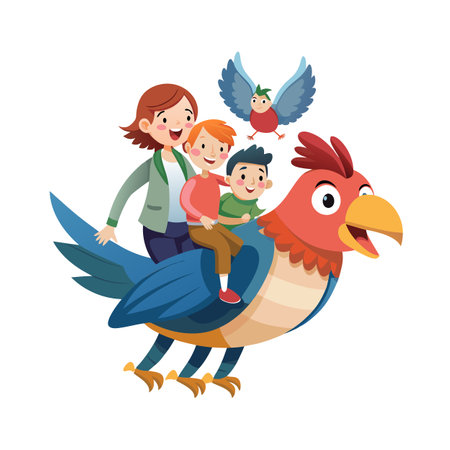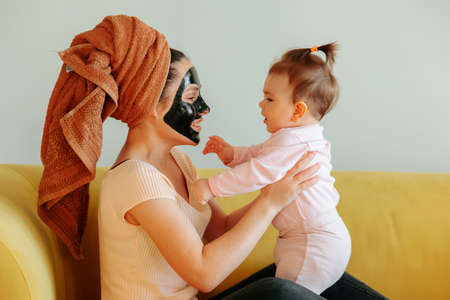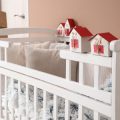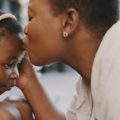Introduction to Baby Safety at Home
Ensuring the safety of babies at home is a top priority for families across the UK. British homes, with their unique layouts, older building structures, and specific lifestyle habits, present a variety of potential hazards for curious infants and toddlers. From the traditional Victorian terrace to modern flats, each home comes with its own set of risks that parents and carers need to address. Baby-proofing isnt just about installing stair gates or socket covers—its about understanding everyday dangers in the home environment and proactively creating a safe space where little ones can explore and grow without unnecessary risk.
In the UK, accidental injuries at home remain one of the leading reasons for hospital visits among children under five. Common household features such as open fireplaces, steep stairs, and small spaces can pose significant threats if not properly managed. Moreover, British weather often means babies spend more time indoors, increasing exposure to domestic hazards. Recognising these risks early and taking practical steps to mitigate them is essential for every UK family.
The following table highlights key reasons why baby-proofing is crucial for UK homes:
| UK-Specific Factor | Potential Risk | Why It Matters |
|---|---|---|
| Older Housing Stock | Loose wiring, uneven floors | Common in many UK homes; increases tripping and electrical dangers |
| Staircases | Falls from height | Narrow or steep stairs are typical in terraced houses |
| Open Fireplaces | Burns, carbon monoxide exposure | Still found in many British living rooms and bedrooms |
| Small Living Spaces | Crowded environments, clutter hazards | Limited space increases chances of accidents |
| Poor Natural Lighting | Visibility issues | Darker rooms can obscure hazards on the floor or furniture edges |
Understanding these factors is the first step towards creating a safer home for your baby. In this article, we will explore common household hazards specific to UK environments and provide practical prevention tips tailored to British families.
2. Choking and Suffocation Risks
Choking and suffocation present significant dangers to babies, especially as they begin to explore their environment. British homes often contain everyday items that can become hazardous in the hands of curious infants. Awareness and proactive prevention are essential for keeping little ones safe.
Common Choking and Suffocation Hazards in UK Homes
| Hazard | Common Locations | Description |
|---|---|---|
| Small Toys and Parts | Living rooms, play areas | Toys with detachable or loose components can easily be swallowed. |
| Coins and Batteries | Kitchens, bedrooms, hallways | Loose change or button batteries pose serious choking and chemical risks. |
| Food Items | Kitchens, dining areas | Grapes, cherry tomatoes, popcorn, nuts, and chunks of cheese are common culprits. |
| Cot Bedding and Soft Toys | Nurseries, bedrooms | Pillows, duvets, bumper pads, and stuffed animals can cause suffocation if left in a babys cot. |
Practical Strategies to Reduce Choking and Suffocation Risks
- Select Age-Appropriate Toys: Always check age recommendations on toys and avoid those with small parts for children under three years old.
- Store Hazardous Items Safely: Keep coins, batteries, marbles, and other small objects out of reach—in cupboards with childproof locks if possible.
- Supervise Mealtimes: Cut food into small, manageable pieces (e.g., quarter grapes lengthwise) and encourage sitting while eating. Avoid giving hard foods like whole nuts until your child is older.
- Cot Safety: Ensure cots are free from pillows, duvets, soft toys, and loose bedding. Use a firm mattress with a securely fitted sheet only.
Emergency Response Tips
- If your baby is choking but coughing effectively, encourage them to keep coughing. If not breathing or unable to cry/cough, call 999 immediately and follow NHS guidance on first aid for choking infants.
Summary Table: Quick Checks for Parents in the UK
| Room | Main Risk Item | Prevention Tip |
|---|---|---|
| Lounge/Playroom | Toys with small parts | Regularly inspect toys; remove damaged ones promptly. |
| Kitchen/Dining Area | Food hazards & coins | Supervise eating; store coins/batteries safely away. |
| Bedroom/Nursery | Bedding & soft toys | Keep cot clear except for baby; use only recommended bedding. |
A combination of vigilance, education, and simple changes can significantly lower the risk of choking or suffocation in British homes. Regularly reviewing your home environment ensures it remains as safe as possible for your growing baby.

3. Falls and Trips in the Home
Falls and trips are among the most common hazards for babies in UK households, where architectural features such as stairs, split-level rooms, and hard flooring are prevalent. Unlike homes in some other countries, many UK properties—especially older terraced houses and flats—have steep staircases, narrow corridors, and minimal carpeting. These factors can increase the risk of falls for crawling babies and toddlers learning to walk.
Typical Causes of Falls and Trips in UK Homes
| Hazard | Description |
|---|---|
| Stairs | Often steep and narrow; lack of carpet increases slipperiness |
| Hard Flooring | Wooden or tiled floors common in kitchens and hallways; provide little cushioning during a fall |
| Loose Rugs & Mats | Scatter rugs can slip on laminate or tile surfaces |
| Cluttered Hallways | Toys, shoes, and bags left on the floor create trip hazards |
Actionable Prevention Tips
- Install Safety Gates: Fit secure safety gates at both the top and bottom of stairs. Choose models that meet British Standards (BS EN 1930).
- Add Non-Slip Stair Strips: Apply non-slip strips or stair runners to reduce slipping risk on wooden or painted steps.
- Secure Rugs: Use anti-slip mats under rugs or opt for fitted carpets where possible to prevent movement.
- Declutter Regularly: Keep hallways, landings, and living spaces clear of toys and other objects. Use storage baskets or shelves to organise items.
- Cushion Hard Surfaces: Place soft play mats in areas where your baby spends time playing or learning to walk.
Additional UK-Specific Advice
- If you live in a maisonette or flat with communal stairwells, speak with building management about regular maintenance to ensure handrails are secure and lighting is adequate.
- Avoid using pushchairs on stairs wherever possible—always carry your baby instead.
By recognising these typical British home hazards and implementing practical safeguards, you can significantly reduce the risk of falls and trips for your baby.
4. Poisoning Hazards
Babies are naturally curious and tend to explore their environment by putting objects into their mouths, making them particularly vulnerable to accidental poisoning. In UK homes, some of the most common sources of poisoning for babies include household cleaning products, medicines, and certain indoor and garden plants.
Potential Poisoning Risks in UK Homes
| Item | Examples | Safe Storage Tips |
|---|---|---|
| Cleaning Products | Bleach, washing-up liquid, toilet cleaners, dishwasher tablets | Store in high cupboards with child locks; never decant into drink bottles |
| Medicines | Painkillers (paracetamol, ibuprofen), prescription medication, vitamins | Keep in original packaging inside a locked medicine cabinet; never leave out on counters or bedside tables |
| Plants | Daffodils, foxglove, yew, ivy | Identify and remove toxic plants from accessible areas; educate family members about plant risks |
Practical Advice for Prevention
- Always return products to their secure place immediately after use.
- Install safety catches on all lower cupboards and drawers within baby’s reach.
- Avoid using decorative bowls for pills or leaving handbags containing medication where babies can access them.
- If unsure whether a plant is poisonous, consult the Royal Horticultural Society’s list of toxic plants commonly found in the UK.
If Poisoning is Suspected
- Do not attempt to make your child vomit.
- Call NHS 111 or 999 immediately if you suspect poisoning or your baby is unresponsive.
Your diligence in storing hazardous substances safely is crucial for preventing accidental poisonings and ensuring your baby’s home environment remains a secure place to grow and explore.
5. Burns and Scalds
Burns and scalds are a significant hazard for babies in UK homes, with everyday items posing unexpected risks. Curious little hands can easily reach hot drinks, kettles, saucepans, or even radiators, resulting in painful and sometimes serious injuries. The kitchen is a particularly high-risk area, but dangers exist throughout the house.
Everyday Burn and Scald Dangers in UK Homes
| Hazard | Common Location | Risk Level |
|---|---|---|
| Kettles & Hot Drinks | Kitchen/Anywhere drinks are served | Very High |
| Radiators & Heated Towel Rails | Living room, Bedrooms, Bathrooms | High |
| Cups of Tea/Coffee | Lounge, Dining Area | High |
| Bath Water | Bathroom | Moderate to High |
| Ironging Equipment & Hair Straighteners | Bedrooms, Utility Areas | Moderate to High |
| Ovens & Hobs | Kitchen | Very High |
Protection Measures for UK Families
- Kettle Safety: Always place kettles at the back of the worktop and ensure cords are out of reach. Never carry hot drinks while holding your baby.
- Cup Placement: Keep mugs and cups well away from edges of tables and counters. Use non-slip mats on surfaces where possible.
- Radiator Guards: Fit radiator covers or guards to prevent direct contact, especially in rooms where babies play or sleep.
- Thermostatic Controls: Set your hot water thermostat to 46°C or below to reduce scald risk from taps and baths.
- Bath Time Caution: Always test bath water with your elbow before placing your baby in it. Consider installing thermostatic mixing valves on taps.
- Unplug Appliances: Unplug and safely store hair straighteners and irons immediately after use—these items can remain dangerously hot for several minutes.
- Cooking Vigilance: Turn saucepan handles inward on the hob and use back burners where possible. Never leave the kitchen unattended when cooking if children are present.
Taking these practical steps will help UK families create a safer home environment for their babies, significantly reducing the risk of burns and scalds.
6. Electrical and Fire Safety
When it comes to home safety for babies in the UK, electrical and fire hazards are critical concerns. British homes often have multiple electrical sockets at low levels, making them easily accessible to crawling infants. Additionally, the use of electric kettles, portable heaters, and open fireplaces is common in many UK households, increasing potential risks.
Electrical Outlet Safety
Babies are naturally curious and may attempt to insert objects or fingers into electrical sockets. To mitigate this risk:
- Install socket covers: Use British Standard-approved outlet covers on all unused sockets within your child’s reach. Ensure they fit securely and cannot be easily removed by small hands.
- Organise cables: Keep wires from appliances such as TVs, lamps, or chargers out of reach or concealed using cable tidies or trunking. This prevents tripping hazards and discourages chewing or pulling.
- Unplug unused appliances: Always unplug devices when not in use, especially in rooms where your baby plays.
Fire Hazards in British Homes
Open fireplaces, candles, and portable heaters are typical sources of fire risk in UK homes. Here’s how you can adapt your home environment:
| Hazard | Prevention Tip |
|---|---|
| Open Fireplaces | Install a fixed fireguard that meets British safety standards; keep matches and lighters locked away. |
| Candles/Tealights | Avoid using candles; opt for battery-operated alternatives instead. |
| Portable Heaters | Place heaters well out of reach and never use them to dry baby clothing. |
| Kettles & Toasters | Position these appliances towards the back of worktops and keep cords tucked away. |
Practical Home Adaptations for Accident Prevention
- Smoke alarms: Fit smoke alarms on every level of your home and test them monthly; replace batteries regularly (at least once a year).
- Fire escape plan: Familiarise yourself with your building’s fire evacuation routes and ensure exits are free from obstructions at all times.
- No loose plugs: Never leave plugs partially inserted into sockets as this poses both electrical and fire risks.
- PAT testing: If you’re renting or living in an older property, ask your landlord about Portable Appliance Testing (PAT) to ensure all appliances are safe for use around children.
Your Baby’s Safety Comes First
A proactive approach to electrical and fire safety will help create a secure home environment for your growing family. Regularly review your safety measures as your baby becomes more mobile to prevent unexpected accidents.
7. Conclusion: Building a Safe Home Environment
In summary, creating a safe home for babies in the UK requires ongoing attention to a variety of potential hazards commonly found in British households. From preventing falls on staircases and securing windows, to ensuring kitchen safety and keeping small objects out of reach, each step contributes significantly to your childs wellbeing. The following table highlights the key points discussed throughout this guide:
| Hazard | Prevention Tips |
|---|---|
| Stairs & Windows | Install safety gates; fit window locks and restrictors |
| Choking Hazards | Keep small items, coins, and toys with small parts away from babies |
| Chemicals & Cleaning Products | Store in locked cupboards; use cupboard locks |
| Electrical Outlets & Cords | Use socket covers; keep cords out of reach or use cord organisers |
| Hot Surfaces & Liquids | Turn pot handles inward; use kettle guards; never leave hot drinks near baby |
| Furniture & Heavy Items | Anchor furniture to walls; avoid placing climbable items nearby |
As your baby grows and becomes more mobile, their ability to access new areas and objects increases rapidly. Its vital to regularly review your home environment and update safety measures accordingly. Encourage all family members and caregivers to stay vigilant and proactive. By taking these precautions, you foster not only a physically safer home but also peace of mind as your child explores, learns, and thrives.


